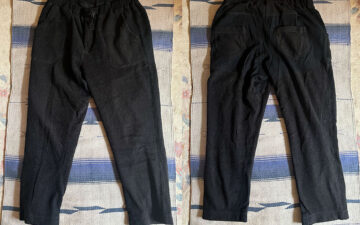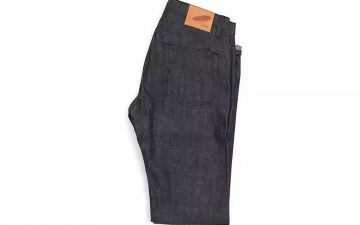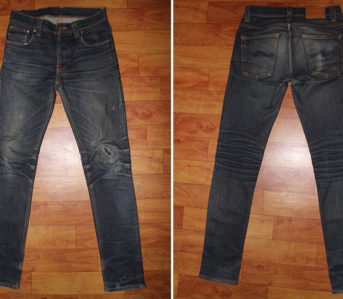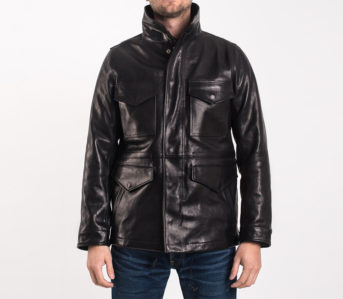By now, most people can identify what makes a pair of blue jeans a pair of blue jeans; indigo-dyed denim fabric, five pockets, and two legs. Beyond that, denim brands have used the more minute details to distinguish themselves from the rest.
Nick Williams is like many of us, a denimhead through and through. Unlike many of us, his involvement in the industry is less about constructing a pair of trusty five-pockets, and more about the branding that goes into them. Designing graphics for Levi’s Europe, Williams has recreated artwork and graphics from deep within the Levi’s archives. Together with his wife, Jenny Corpuz, his vast knowledge and intimate relationships within the industry have culminated in his book, Denim Branded.
From the rivets to the arcuates to the marketing materials, and everything in-between, the book attempts to break down each component of a jean to its branding elements. Chapter by chapter, Williams gives insight and historical background to each and lays out (literally) a bevy of examples in high-quality color photographs. It feels like a Lightning magazine, but with two main differences: rather than displaying the gestalt of the garments, Denim Branded gets into the nitty-gritty details, and it’s much nicer on the coffee table.
With the help of the Levi’s, Wrangler, Lee archives, readers get an intimate and up-close look at hardware, patches, arcuates, flashers, and more. Placed among contemporary brands like Tellason, Rogue Territory, Denham the Jeanmaker, Endrime, Dawson Denim, Evisu, Sugar Cane, Kings of Indigo, Diesel, W.H. Ranch, Carhartt, Son of a Stag, Left Field, and Iron Heart, the evolving details and references to the past become clear. And the macro lens placed upon the minute details of each is satisfying in its own way.
The book is large enough and easily digestible at just over 200 pages, especially since it’s mostly photos. And the range of brands included is by no means narrow. But, I still would have liked to see an even wider breadth of brands. Fans hoping to see more Japanese brands represented will be disappointed, and the burgeoning denim scene of Southeast Asia is conspicuously left out entirely. Fans of denim outside of this stricter, purist community will also be let down. It would have been interesting to see how denim brands from the fast fashion and high-fashion and streetwear worlds approach jeans branding.
The brands that they did focus on, however, are highlighted well and provide good insight into their respective histories. Quotes from the designers show the human component into their designs and the stories behind them, reminding you that every little detail is considered carefully by real people.
Overall, it is refreshing to see a book that’s devoted to jeanswear minus the denim. Though in my opinion, it’s not the most riveting (I’m so sorry) fashion book, it’s one certainly worth considering, if not for the text, certainly for the photos. Denim Branded will appeal to lovers of jeans, fashion history, and, especially, branding.
If any of these subjects interest you, especially if all of them interest you, you can learn more at the Denim Branded website and purchase the book at Amazon.




